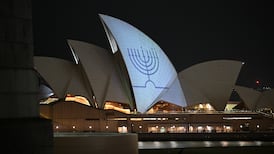South Down is a nationalist heartland where support for Sinn Féin and the SDLP is strong, so with seat numbers reduced from six to five a unionist is likely to lose out on March 2nd.
The rural and coastal constituency where agriculture, fishing and tourism are important industries takes in places such as Newcastle and Kilkeel.
Last year the result in South Down was: SDLP two; Sinn Féin two; DUP one; and UUP one.
But there are only five seats up for grabs this time as the Assembly is reducing from 108 members to 90. Based on last year’s electoral statistics, there is one unionist and three nationalist seats that seem secure, with the fifth seat highly likely to go to a nationalist but nothing is guaranteed. Indeed, turnout and the vagaries of PR could play a factor.
Veteran DUP politician and former health minister Jim Wells is confident of retaining his seat in South Down where he has served since 1998 despite the controversy swirling around his party over the "cash for ash" scandal. Wells topped the poll last year with 5,033 first preferences, and filled the first seat with 6,470 votes.
The UUP’s Harold McKee, who took 3,481 first preferences and was elected next with 6,141 votes, holds the more marginal of the unionist seats.
Ahead of polling day Wells says “it is mathematically possible for two unionist seats but it will be difficult”, and he believes unionist voters will support him in greater numbers than McKee.
"This election is about getting rid of Arlene Foster, " he claimed. "Sinn Féin want shot of her but people can see through that."
A UUP spokeswoman believes McKee is the “more transfer-friendly unionist” on the ballot paper, and says in the constituency they are sensing “disillusionment among DUP voters”.
She goes on to reference some of the traditional DUP supporters canvassed by the UUP, saying they will give their first preference to McKee over Wells.
Wells acknowledges that people are mentioning the botched renewable heat incentive (RHI) scheme that his party has faced much criticism over, but while they are questioning him about it “they are still voting DUP”.
In May 2016, the SDLP and Sinn Féin both ran three candidates but this time will be fielding two each to take into account the reduced seats numbers.
Sinn Féin veteran Catriona Ruane has stepped down from frontline politics and is replaced by Sinead Ennis, who will be standing with outgoing infrastructure minister Chris Hazzard.
Sinead Bradley and Colin McGrath are on the ballot for the SDLP.
It seems unlikely Alliance could increase its vote in such significant numbers to seriously challenge for a seat, though Patrick Brown has been endorsed by a former UUP MLA for the area John McCallister who did not make the cut last year as an independent but did take 1,156 first preferences before he was eliminated from the contest.
An Alliance spokesman says a seat for the party is “a tough job but do-able”, and its candidate was “enthusing people with a positive campaign”.
Prediction
Wells has been an MLA for South Down since 1998. If the fallout from the RHI scheme does not have an impact, he is safe. Nationalists are likely to win the other four seats.
The chance of unionists taking two of the five seats is possible but unlikely, and as one politico said “it would be a serious upset if Wells lost his seat; the smart money is on the DUP”.
The final seat, as with all other constituencies, will be the one to watch.
The result could be SDLP two; Sinn Féin two; DUP one.
Candidate list
Sinead Bradley, Colin McGrath (SDLP); Sinead Ennis, Chris Hazzard (SF); Jim Wells (DUP); Harold McKee (UUP); Patrick Brown (Alliance); Hannah George (Green); Lyle Rea (TUV); Gary Hynds (Cons); Patrick Clarke (Ind)












